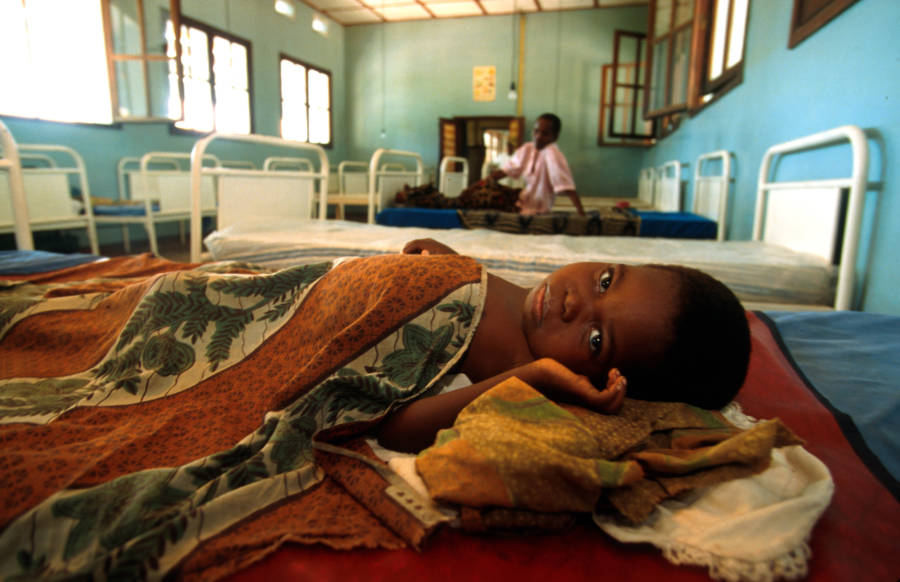The Ebola Outbreak Of 2014

Per-Anders Pettersson/Getty ImagesA child sick with the Ebola virus in the Democratic Republic of Congo. 1996.
The 2014 Ebola outbreak in West Africa was the deadliest since the discovery of the virus strain in 1976. Concern about the medical crisis spread to the U.S. as doctors declared the country’s first case on Sept. 30, 2014.
It didn’t take long before the rumors began. Some suggested that the deadly virus — marked by fever, vomiting, and diarrhea — was purposely allowed to spread so that the CDC could patent a vaccine and make huge profits. Barbara Loe Fisher, an anti-vaccine activist, pointed to signs she said were reminiscent of false flag attacks: “Why are experimental Ebola vaccines being fast-tracked into human trials and promoted as the final solution, rather than ramping up testing and production of the experimental ZPapp [sic] drug?”
That was probably because, according to Anthony S. Fauci, M.D., of the National Institute of Allergy and Infectious Diseases, “We do not have definitive evidence that ZMapp is superior to the optimized standard of care.” Initial trials enrolled too few people to determine whether it was the better, safer option.

U.S. Air Force photo/Master Sgt. Jeffrey AllenCapt. Stacey Morgan at the San Antonio Military Medical Center in Texas, as part of an Ebola medical support team designed to assist civilian medical agencies.
Just to be clear, the CDC does hold a patent on a vaccine for a completely different strain of Ebola — one that would prove irrelevant to the 2014 outbreak. Purdue University Professor and Ebola researcher David Sanders explained the purpose of CDC patents on viruses: they exist “for the common good, so a commercial company can’t come along and patent it….The CDC lets researchers work with the strain without fees.”





